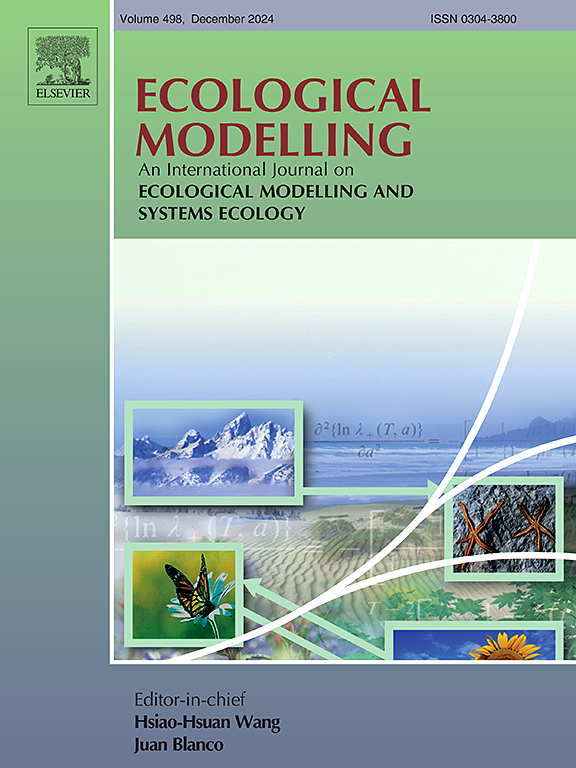秋季产卵大西洋鲱鱼的世代随机生长模型:来自现实世界数据的见解
IF 3.2
3区 环境科学与生态学
Q2 ECOLOGY
引用次数: 0
摘要
南圣劳伦斯湾秋季产卵大西洋鲱鱼的生物量迅速下降,目前处于预防方法框架的谨慎区。此外,它正在迅速接近其极限参考点。在这项工作中,我们使用随机微分方程和该物种的年龄长度数据建立并校准了一个现实模型。校准后的随机模型95%的概率区间几乎涵盖了所有观测到的数据点,同时保持了较窄的不确定性界限,显示出其捕捉数据变异性的能力。此外,在所有校准年份,模型的平均预测值与观测值之间的对称平均绝对百分比误差保持在2.86%以下,表明该模型有效地反映了物种的生长动态。我们的结果表明,随着时间的推移,人口正在经历最大规模的减少,并没有达到高龄。此外,我们表明,随着时间的推移,年度内的变化更大,表明近年来的增长模式不太一致。根据我们的模型,圣劳伦斯湾南部秋季产卵大西洋鲱鱼的生长动态变化可能会显著降低繁殖产量,并阻碍该物种的重建能力。本文章由计算机程序翻译,如有差异,请以英文原文为准。
A generational randomized growth model for fall-spawning Atlantic herring: Insights from real-world data
The Southern Gulf of St. Lawrence fall-spawning Atlantic herring has seen rapid declines in biomass and is currently in the cautious zone of the Precautionary Approach Framework. Moreover, it is rapidly approaching its limit reference point. In this work, we build and calibrate a realistic model using random differential equations and age-length data for this species. The calibrated random model’s 95% probabilistic intervals encompass nearly all observed data points while maintaining narrow uncertainty bounds, exhibiting its capacity to capture data variability. Additionally, the Symmetric Mean Absolute Percentage Error between the model’s mean predictions and observed values remains below 2.86% across all calibrated years, indicating that the model effectively represents the species’ growth dynamics. Our results indicate that over time the population is experiencing a reduction in maximum size and is not achieving as advanced ages. Furthermore, we show that there is greater intra-annual variability over time, pointing towards less consistent growth patterns in recent years. These changes in the growth dynamics of the Southern Gulf of St. Lawrence fall-spawning Atlantic herring, suggested by our model, could significantly reduce reproductive output and hinder the species’ rebuilding capacity.
求助全文
通过发布文献求助,成功后即可免费获取论文全文。
去求助
来源期刊

Ecological Modelling
环境科学-生态学
CiteScore
5.60
自引率
6.50%
发文量
259
审稿时长
69 days
期刊介绍:
The journal is concerned with the use of mathematical models and systems analysis for the description of ecological processes and for the sustainable management of resources. Human activity and well-being are dependent on and integrated with the functioning of ecosystems and the services they provide. We aim to understand these basic ecosystem functions using mathematical and conceptual modelling, systems analysis, thermodynamics, computer simulations, and ecological theory. This leads to a preference for process-based models embedded in theory with explicit causative agents as opposed to strictly statistical or correlative descriptions. These modelling methods can be applied to a wide spectrum of issues ranging from basic ecology to human ecology to socio-ecological systems. The journal welcomes research articles, short communications, review articles, letters to the editor, book reviews, and other communications. The journal also supports the activities of the [International Society of Ecological Modelling (ISEM)](http://www.isemna.org/).
 求助内容:
求助内容: 应助结果提醒方式:
应助结果提醒方式:


